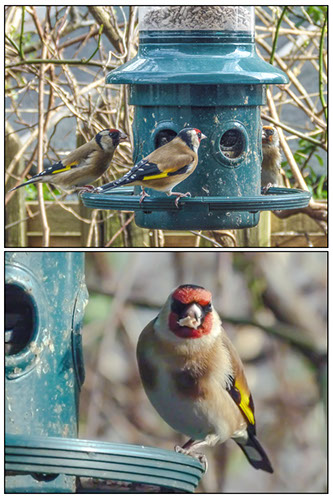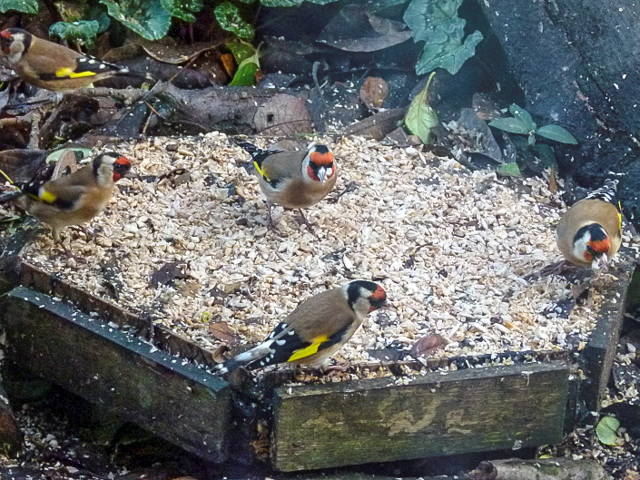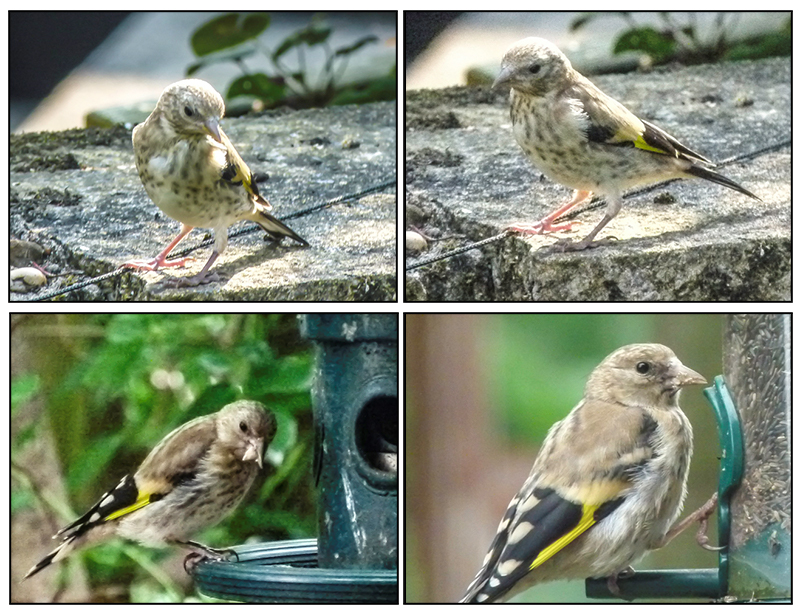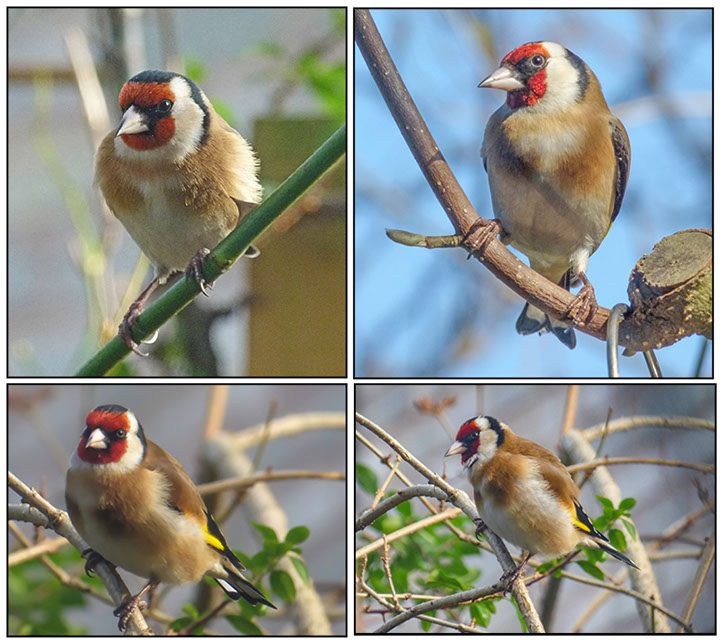

Home
About Us
Allotments
Garden Equipment
Seed Suppliers
Manure Problems
Solve It - Puzzles
Children's Pages
GLA Blog
Weather Blog
School Veg Patch
Useful Links
Weather Blog
Garden Video Blog
Goldfinch
 Goldfinches are regular visitors to our garden feeders, often descending as a flock. The most we have counted at one time is eighteen
Goldfinches are regular visitors to our garden feeders, often descending as a flock. The most we have counted at one time is eighteen
On the plot however we hear goldfinches more often than see them. They twitter as they fly over the plot and garden or rest in the trees.
C lick on the sound icon to visit a web page that has a sound clip of it's song.
lick on the sound icon to visit a web page that has a sound clip of it's song.
It is the most colourful member of the finch family found in Britain; the collective word for a flock of goldfinches is a charm which is perfectly suited to them. In Victorian times they were very popular cage birds. Fortunately in Britain they are now protected from this fate by the Wildlife and Countryside Act 1981.
Their nest are often built at the ends of thin branches, often in fruit trees, or among brambles and lined with wool or thistle down. They lay five or six eggs and can have up to three broods a year.
Goldfinches have a much slimmer beak than that of most members of the finch family and can winkle seeds from plants that other finches find inaccessible such as thistles, teasels and dandelions. They are light birds and can perch on plants that would not hold the weight of a heavier bird. When our allotment site was overgrown and unloved, goldfinches were often seen in groups browsing the thistle seed heads.
 Goldfinches are becoming more common in gardens with many suppliers offering specially designed feeders which can be filled with niger seeds especially for them but we didn’t find the special feeders to be particular successful at encouraging them to feed and just fill ordinary seed feeders with niger seed. They may take a while to home in on new feeders but do eventually find then after which the will queue up for a turn to sit on the perch.
Goldfinches are becoming more common in gardens with many suppliers offering specially designed feeders which can be filled with niger seeds especially for them but we didn’t find the special feeders to be particular successful at encouraging them to feed and just fill ordinary seed feeders with niger seed. They may take a while to home in on new feeders but do eventually find then after which the will queue up for a turn to sit on the perch.
Niger are oil rich seeds that come from a relative of the sunflower the seed hearts of which goldfinches also love. If the feeder perches are taken goldfinches will congregate below taking any food that falls to the ground. For this reason we have positioned a ground feeding table under our sunflower heart feeder.
Young goldfinches some catch on to this idea too.
Young goldfinches can be recognised by the makings on and around their tail - they develop the coloured plumage later. The birds in the photograph above are at a transition stage.

They will also take seed from lettuce if it is allowed to run to seed and garden plants such as cosmos and cornflowers. Although goldfinches are classed as seed eating birds they will also take insects. The young bird in the video clip below was making short and thorough work clearing the aphids on the back of the leaves of our plum tree. Brilliant biological control and all for free!
Goldfinches are agile little birds and will use their feet when feeding.
Most birds whether seed eaters or insectivores feed developing young on insects or spiders. During fledging this is needed to develop the feathers properly. By encouraging birds into your garden or onto your plot you are recruiting an army of helpers to keep down the population of destructive bugs.

Our Plot at Green Lane Allotments Blog | A Gardener's Weather Diary | School Vegetable Patch Website
© Our Plot on Green Lane Allotments - Please email me if you wish to use any of this site's content